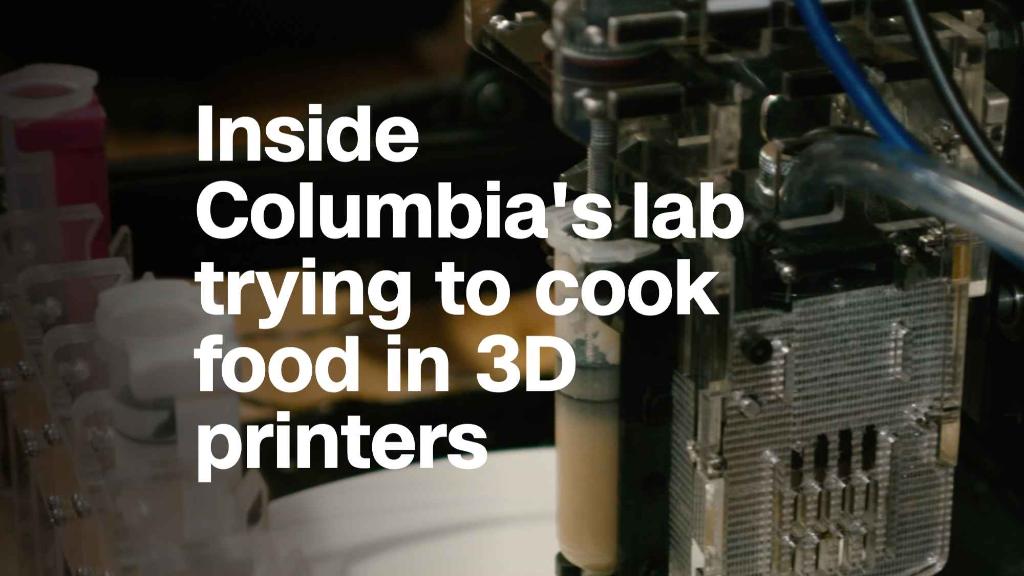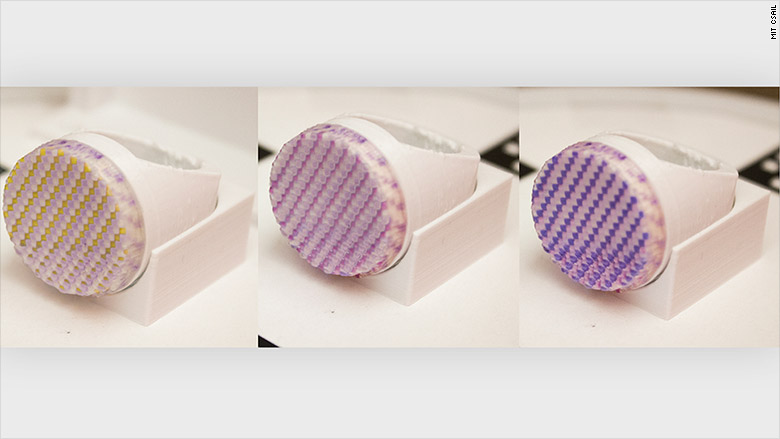
You may one day be able to change the color of your favorite shirt or bracelet to match the rest of your outfit.
New research from MIT released on Monday details a method called ColorFab for recoloring 3D printed objects after they have been printed. The method combines software, hardware and special 3D ink.
The effort aims to reduce waste: You won't need to print something again to change the color.
Related: Adidas unveils new 3D printed shoe
"Manufacturers and designers spend significant amounts of time, energy and money re-printing designs when they don't come out exactly right the first time," Stefanie Mueller, coauthor of the paper and professor at MIT's Computer Science and Artificial Intelligence Lab, told CNN Tech. "This sort of technology could help minimize the amount of waste that is produced from updating products."
The MIT team says their research is one step closer to providing a solution.
The method uses a specialized 3D printable ink that changes color when it's exposed to UV light. The new color remains even after the light has been removed.
On the ColorFab interface, users can upload a 3D model, choose a color pattern and print the object. MIT uses a UV light to change the 3D pixels on an item from transparent to colored, and a standard office projector to change them from colored to transparent.

The ink, developed by MIT, includes a base dye, a "photo initiator" and "light adaptable" dyes. The latter brings out the color in the base dye, while the photo initiator lets the base dye harden during printing. The inks can alter their appearance from transparent to colored when exposed to certain light.
Related: This robot can 3D print a building in 14 hours
The researchers say they can change the color of an object in about 20 minutes, but believe it will take less time in the future as the method improves. Another drawback: for now, the colors can appear grainy.
Although the research is focused on common 3D printed materials such as plastic, it could ultimately be used on a wide variety of other items, such as metals for jewelry.
"Accessories, such as earrings, bracelets, necklaces, and smart watches tend to be worn on an everyday basis, making it difficult to pick a color that matches all outfits," the paper says. "With ColorFab, such accessories can be recolored depending on what the user is wearing."
It could have an impact on retailers, too, according to the researchers. For example, stores could customize their products in real time and shoppers could try on a single outfit in different colors.
"I'm hopeful that in the future this sort of system could help encourage consumers to be more mindful about their purchases and maybe buy just one of something instead of buying it in every single color," Mueller said.

